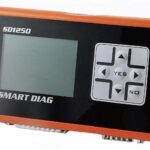The debate between OBD1 and OBD2 systems in the BMW E36 often arises, especially when considering engine swaps or modifications. While the S52 engine (OBD2) offers a slight horsepower and torque advantage over the S50 (OBD1), the core difference lies in diagnostics and tuning. OBD1 utilizes a simpler, flash-code system for troubleshooting, relying on counting flashes from a check engine light and referencing a repair manual. OBD2, introduced in 1996 for emissions compliance, employs a standardized diagnostic connector and more complex computer systems. This allows for more detailed data retrieval using a scan tool.
Tuning an OBD1 E36 often involves physically swapping chips in the Engine Control Unit (ECU), providing a more hands-on approach. OBD2 ECUs typically require flashing with specialized software or sending the unit to a tuner. This distinction makes OBD1 appealing to some enthusiasts who prefer a more direct method of modification. However, the simplicity of OBD1 doesn’t necessarily translate to cost savings. Both OBD1 and OBD2 E36s can be expensive to maintain and repair, particularly if neglected. Parts for these cars are generally not as readily available or affordable as those for more common vehicles.
Beyond diagnostics and tuning, potential buyers should consider the overall condition of the vehicle. A well-maintained E36 M3, regardless of the OBD system, can provide a rewarding driving experience. However, purchasing a cheaper, neglected example often leads to significant repair costs. Expect to invest around $10,000 to $12,000 for a well-sorted, naturally aspirated E36 M3. Factor in the potential for ongoing maintenance and repairs, as these cars require more than just basic upkeep.
Owning an E36, whether OBD1 or OBD2, demands a certain level of commitment and mechanical aptitude. These are not vehicles that thrive on infrequent maintenance. Be prepared to perform a majority of the work yourself, requiring a comprehensive set of tools and a willingness to learn. If relying on professional mechanics for all repairs, ownership costs can escalate rapidly. Ultimately, the best E36 for you depends on your budget, DIY skills, and tolerance for potential maintenance challenges. Choosing a well-maintained example and understanding the inherent costs associated with these cars is paramount.

